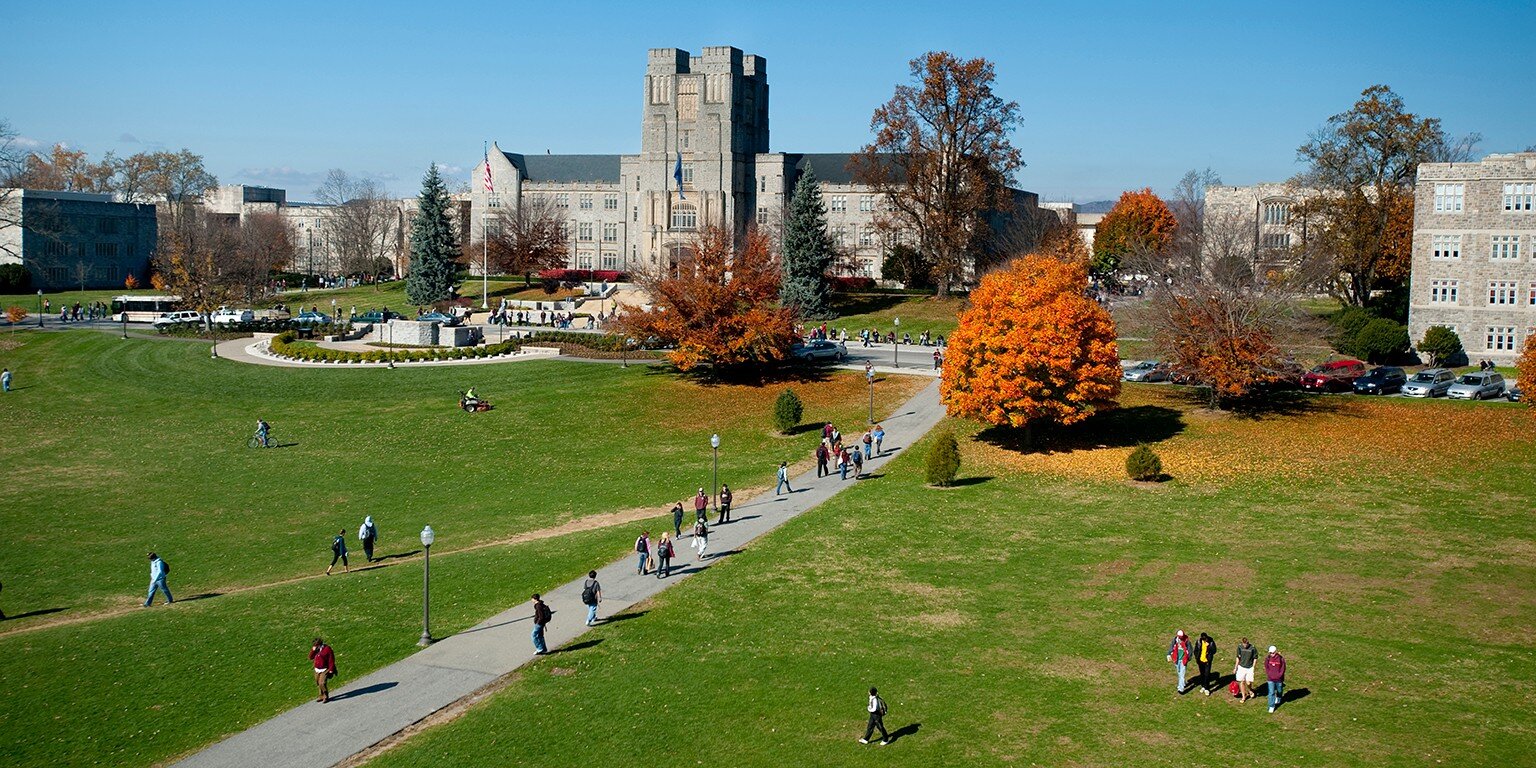EXHIBIT
CREATING HOME
BLACK INCLUSION AND COMMUNITY BUILDING
In this exhibit you can explore the different phases of Solitude’s history. We begin during the period when this place was indigenous land, and go on to explore its history as a slave plantation in the nineteenth century.
Integral to the story of integration at Virginia Tech is the role that the university’s administration and faculty played in both promoting and limiting diversity and inclusion on campus.
When the first Black students began attending Virginia Tech in the 1950s, the university’s administration took efforts to have their integration go unnoticed. Despite occurring before Brown vs. Board of Education (‘54) decision, Virginia Tech was by no means advocates of integration. In regards to Peddrew’s application, Attorney General Lindsay Almond shied away from his typical aggressive segregation beliefs. Knowing that Virginia Tech had no legal justification for denial, Almond suggested to President Newman that he admit Peddrew as quietly as possible, as not to distract from other potentially winnable Civil Rights cases across the state. Charlie Yates recalls a meeting he, Lindsay Cherry, and Floyd Wilson had with Dr. Newman and Paul Farrier, Director of Admissions, prior to them coming to school:
“Mrs. Hoge, Janie Hoge, who was the lady who made her home available to us as students, I do think that she deserves a lot of credit for what she did….she was a great hose, she looked after us as if we were her own children. She fed us. She gave us advice. She kept us in line…” Virginia Tech Admits First Negro, Student From Hampton, Ronoake Times, Sep. 11, 1953 Walter Newman was the 10th President of Virginia Tech. He served from 1947 until 1962. Matthew Winston Sr. 1959 Bugle. An oral history with Winston can be found here An oral history with Dr. Charles Yates can be found here The integration of VT went so unnoticed, that several of the first Black students were unaware of VT’s integration until one of their high school teachers, John Perry of Booker T. Washington High School in Norfolk, told them and encouraged them to apply. Perry successfully helped Charlie Yates, Lindsay Cherry, and Floyd Wilson gain admittance to Virginia Tech in 1954, and again played a vital role in Matthew Winston Sr. 's admittance in 1955. Matt Winston remembers the vital role Perry played in all four men’s admissions process: "With only limited exposure to a student, this gentleman, Mr. Perry, had a knack for identifying the most likely path to his or her future success; not only in technical pursuits, but in other fields as well. He recommended colleges and offered possible solutions to satisfy financial needs...Not many people knew, but he knew that Irving Peddrew was admitted to Tech in 1953...In that decision, he saw the potential to steer future students into engineering at a state institution..So, in 1954, Mr. Perry identified three of his students who he believed were good candidates to enroll in the Tech engineering school. They all applied and were accepted at Virginia Tech that year. The following year, he sent me down the same path."
The only instance in which Black students were admitted to Virginia Tech was if their intended major was not offered at Virginia State, Virginia’s historically Black land-grant university. This meant that each of the first eight Black students to attend Virginia Tech all had to major in engineering, which was one of the few programs Virginia State did not offer. It was not until the 1960’s that such academic restrictions were lifted. Irving Peddrew recalls how such restrictions affected his decision to attend VT:
"I could not take that or try to excel in that area [business] if I wanted to go to Virginia Tech, which was not originally in my plans, but I guess my dad sort of skewed me into electrical engineering because of friends that he had worked with who were electrical engineers and were very prosperous and were doing quite well. I accepted that, and that was the kind of thing that allowed me to get to Virginia Tech, or at least be considered as a student of Virginia Tech. I couldn't have, for instance, taken business and been accepted or been considered as a student, an entrant at Tech if I wanted a mere business degree because that was offered at Virginia State for Blacks."
Despite the engineering major requirement being lifted for Black students by the mid 1960s, Black students were still not attending Virginia Tech in high numbers. With numbers remaining relatively consistnent throughout the 1960s and early 70s, it was Thomas Marshall Hahn, Virginia Tech's 11th President, who first made a concerted effort to recruit underrpresented groups and usher Virginia Tech into a new era. Following Hahn's lead, Virginia Tech's 12th President, William Lavery, launched numerous programs aimed at recruiting and retaining Black students.
BLACK COMMUNITY ENGAGEMENT IN THE 1960S AND BEYOND BARRIERS OF ENTRY INTO WHITE CAMPUS CULTURE FORGING A STUDENT COMMUNITY A CONSTANT BATTLE BETWEEN INCLUSION AND EXCLUSION ADMINISTRATION PROMOTING DIVERSITY










